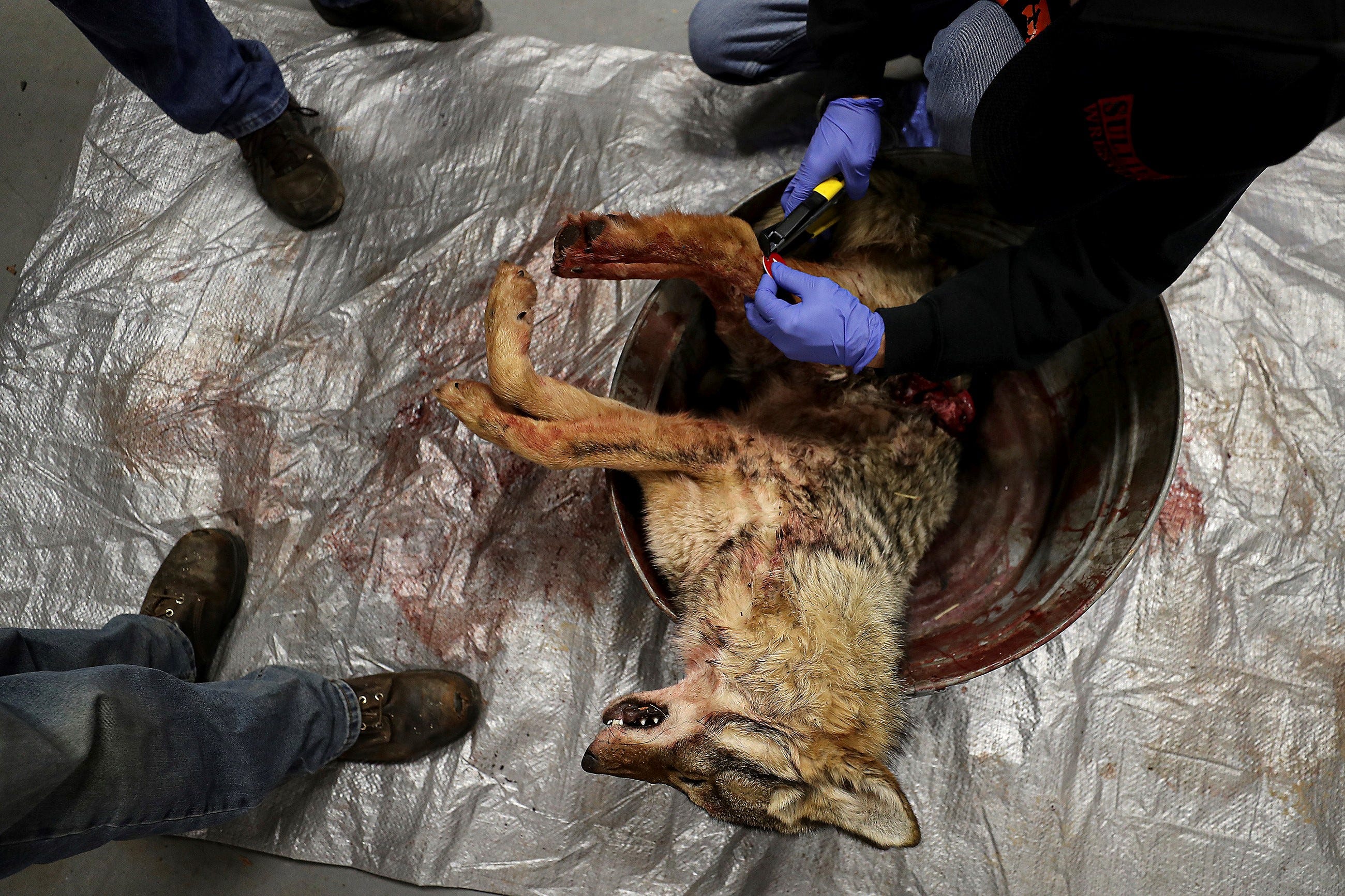EDITORIAL: It's time to end the killing contest hunts in Pennsylvania

- There are about 20 coyote killing contest hunts in Pennsylvania each year.
- Pennsylvania is one of 43 states in the nation to allow such hunting contests.
- There may be as many as 100,000 coyotes in Pennsylvania.
This is not a screed against hunting.
Hunting, in the absence of traditional natural predators, is a necessary means of controlling wildlife populations.
Hunting can provide food for families and offer an opportunity to commune with Mother Nature.
Hunting’s rich traditions have created a culture than can bond families and friends for lifetimes.
And in Pennsylvania, hunting has become an economic engine that generates millions of dollars of revenue.
So no, this is not a screed against hunting.
It Is, however, a plea to end killing contest hunts.
Coyote hunting contests: Pennsylvania, for example, has about two dozen contests each year for the express purpose of killing coyotes.
Proponents of such contests argue that the coyote population needs to be controlled.
They are right about that. There could be as many as 100,000 coyotes in Pennsylvania, officials say, roaming mostly unseen through every county.
It’s coyote-killing season in Pa. Are hunts barbaric or necessary population control?
Killing contests, however, are not a humane way to control the coyote population.
To be blunt, such contests border on barbaric.
Seven states have already banned such killing contests. Pennsylvania should join their ranks.
Coyotes should be hunted just like many other wildlife species, such as deer, bears or turkeys, through regulated hunting seasons.
However, unlike the strict regulations on deer, bears or turkeys — which often include set seasons and hours, size and sex requirements, and bag limits — coyote hunting in Pennsylvania is limited only by how much free time hunters have. The season, according to the Pennsylvania Game Commission, is “24 hours a day, 7 days a week.”
Coyotes have bad reputation: That’s probably because, in many corners, the coyote doesn’t have the best of reputations.
Many folks consider them pests. They’re also stealthy by nature, known as the “trickster” in Native American folklore. Their midnight howls can be startling and scary. And they’re also blamed, often unfairly, as carriers of rabies and killers of livestock, pets and the state’s beloved whitetail deer.
>>Like what you're reading?:Not a subscriber? Click here for full access to The York Dispatch.
The Pennsylvania Game Commission doesn’t help the matter by describing Eastern coyotes as “immigrants” — descendants of animals that moved in from the West and established themselves here in the 1940s and ’50s.
It’s a species often described as a “survivor,” causing many to say: “When the world ends, there will be cockroaches and coyotes.”
It's never good to be compared to a cockroach.
Despite their negative reputation, however, coyotes in Pennsylvania do have some benefits. They help to control rodent and pest populations and keep feral cats, raccoons, and skunks in check as well.
They deserve better: And no matter what you think of coyotes as a species, they don’t deserve to be the subjects of killing contests, where participants compete for prizes — typically cash or hunting equipment — for killing the most and/or largest animals within a specified time period.
Participants in such contests often dump the bodies, having no need for them after the prizes are awarded.
In Pennsylvania, coyote hunters are permitted to use tracking dogs, electronic calls that mimic injured prey, and, thanks to legislation approved by the state in July, infrared and thermal night-vision scopes to spot them easier in the darkness.
Put it all together and its doesn’t sound like a very sportsmanlike activity for our state’s sportsmen.
In fact, it’s often just cruel.
Like the infamous Hegins Pigeon Shoot, that ended in 1998, the killing contests should become relegated to the dust bin of Pennsylvania history.